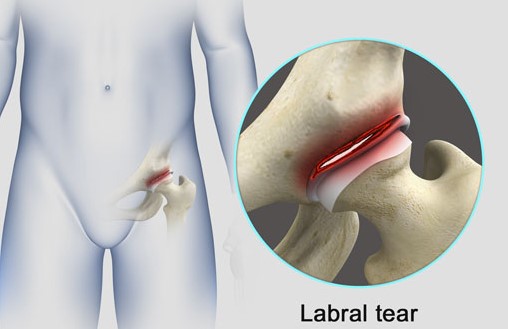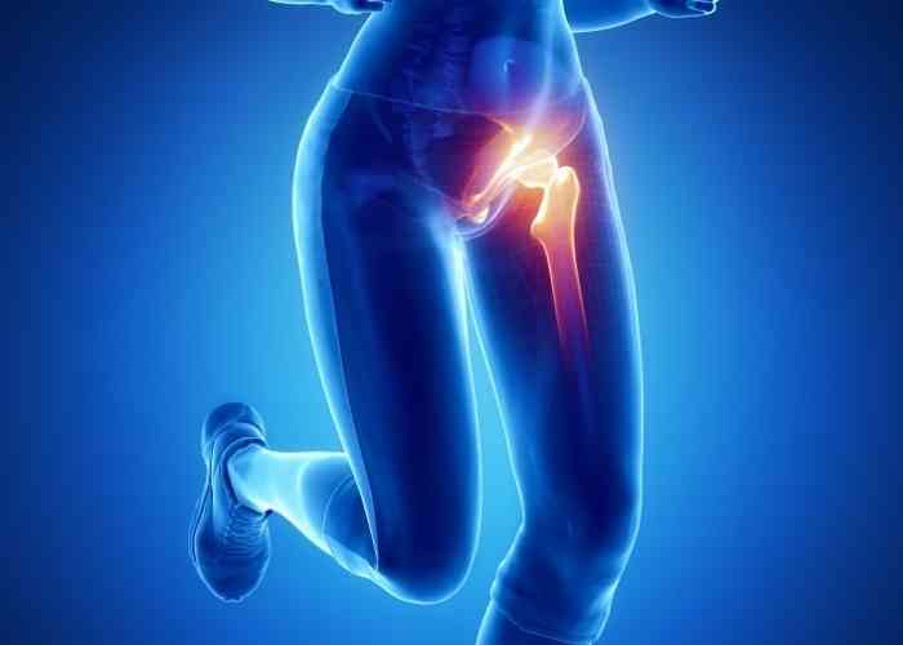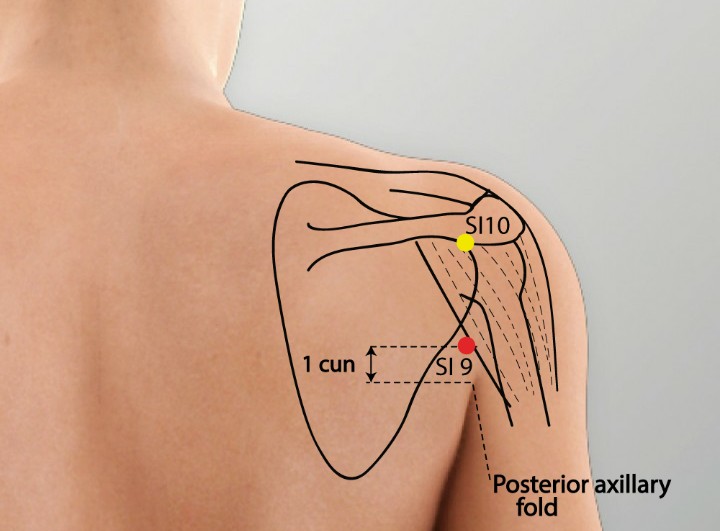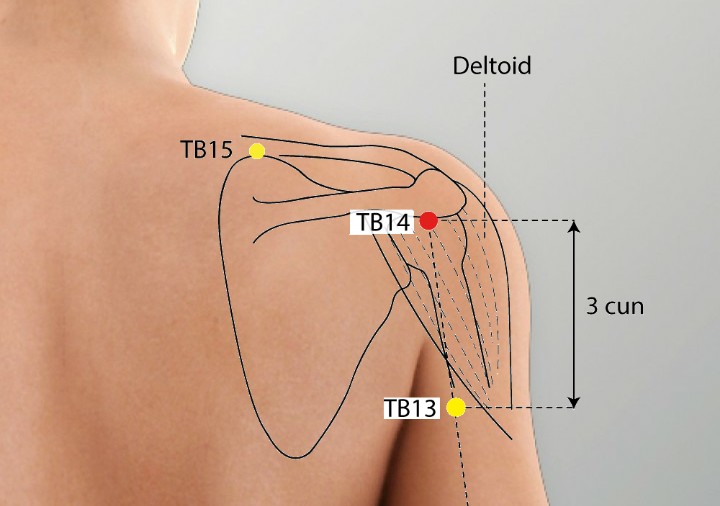Labral Tear and Acupuncture Treatment in Tokyo
A labral tear is a common injury affecting the shoulder or hip, often causing pain, reduced mobility, and functional limitations. While conventional treatments like physical therapy, medication, or surgery are standard, acupuncture has emerged as a complementary therapy to alleviate symptoms and promote healing. This comprehensive guide explores labral tears, their causes, symptoms, and how acupuncture can serve as an effective treatment, including key acupuncture points used in therapy.
- What is a Labral Tear?
- Types of Labral Tears
- Causes and Risk Factors
- Symptoms of Labral Tears
- Diagnosis and Conventional Treatments
- Acupuncture Treatment in Tokyo
- How Acupuncture Can Help with Labral Tears
- Scientific Evidence Supporting Acupuncture for Labral Tears
- How Acupuncture Treats Labral Tears
- The TOM Perspective on Labral Tears
- The Acupuncture Process for Labral Tears
- Key Acupuncture Points for Labral Tears
- For Shoulder Labral Tears
- For Hip Labral Tears
- General Points for Pain and Stress
- Safety and Considerations
- Benefits of Acupuncture for Labral Tears
- Integrating Acupuncture with Conventional Care
- Lifestyle Tips to Support Labral Tear Recovery
- Conclusion
What is a Labral Tear?
The labrum is a ring of cartilage that surrounds the socket of ball-and-socket joints, such as the shoulder (glenoid labrum) and hip (acetabular labrum). It provides stability, cushions the joint, and supports smooth movement. A labral tear occurs when this cartilage is damaged, leading to pain, instability, and restricted motion.
Maybe You Need:
Types of Labral Tears
Labral tears are classified based on their location and characteristics. Below are the primary types:
Shoulder Labral Tears:
- SLAP Tear (Superior Labrum Anterior to Posterior): A tear at the top of the glenoid labrum, often affecting the biceps tendon attachment. Common in athletes who perform overhead motions (e.g., baseball pitchers, tennis players).
- Bankart Lesion: A tear in the lower part of the labrum, typically associated with shoulder dislocations.
- Posterior Labral Tear: Less common, occurring at the back of the shoulder, often due to trauma or repetitive stress.

Hip Labral Tears:
- Acetabular Labral Tear: Damage to the cartilage surrounding the hip socket, often caused by repetitive motions, trauma, or structural abnormalities like femoroacetabular impingement (FAI).
- Degenerative Tears: Result from wear and tear over time, often linked to osteoarthritis or aging.

Causes and Risk Factors
Labral tears can result from acute injuries or chronic stress. Common causes include:
- Trauma: Falls, car accidents, or direct blows to the shoulder or hip.
- Repetitive Motions: Overhead sports (e.g., swimming, volleyball) for shoulder tears; twisting or pivoting motions (e.g., soccer, golf) for hip tears.
- Structural Abnormalities: Conditions like FAI or hip dysplasia increase the risk of hip labral tears.
- Joint Instability: Previous dislocations or lax ligaments can predispose individuals to tears.
- Degeneration: Aging or osteoarthritis can weaken the labrum, making it prone to tearing.
Risk Factors:
- Age: Degenerative tears are more common in older adults.
- Athletic Participation: Sports involving repetitive or high-impact motions increase risk.
- Gender: Hip labral tears are more common in women due to wider pelvic structures.
- Previous Injuries: A history of joint injuries elevates the likelihood of labral damage.
Symptoms of Labral Tears
Symptoms vary depending on the joint affected and the tear’s severity:
Shoulder Labral Tear Symptoms:
- Pain with overhead movements or lifting
- A catching, locking, or grinding sensation
- Shoulder instability or a feeling of “giving way”
- Reduced range of motion
- Weakness or discomfort during activity

Hip Labral Tear Symptoms:
- Groin, hip, or buttock pain, often radiating to the thigh
- Clicking, locking, or catching in the hip joint
- Stiffness or limited range of motion
- Pain during activities like walking, sitting, or twisting
- A sense of instability in the hip

Diagnosis and Conventional Treatments
Diagnosing a labral tear typically involves:
- Physical Examination: Tests like the O’Brien’s test (for shoulder SLAP tears) or the FADIR test (for hip tears) assess pain and mobility.
- Imaging: Magnetic resonance imaging (MRI) with or without contrast (MR arthrography) confirms the tear’s location and extent. X-rays may rule out other conditions.
- Diagnostic Injection: Injecting anesthetic into the joint can help pinpoint the pain source.
Conventional Treatments:
Conservative Management:
- Rest: Avoiding aggravating activities to reduce inflammation.
- Physical Therapy: Strengthening and stabilizing exercises to improve joint function.
- Medications: Nonsteroidal anti-inflammatory drugs (NSAIDs) to manage pain and inflammation.
- Corticosteroid Injections: To reduce inflammation in severe cases.
Surgical Options:
- Arthroscopy: A minimally invasive procedure to repair or trim the torn labrum.
- Labral Reconstruction: For severe tears, using grafts to replace damaged tissue.
- Joint Replacement: Rarely, for advanced degenerative cases.
While effective, conservative treatments may take months, and surgery carries risks like infection or prolonged recovery. This has led many to explore acupuncture as a complementary therapy to manage symptoms and support recovery.
Acupuncture Treatment in Tokyo
Acupuncture, rooted in Traditional Oriental Medicine (TOM), involves inserting thin, sterile needles into specific points on the body to balance the flow of energy. In TOM, Energy flows through meridians, and blockages or imbalances can lead to pain and illness. Acupuncture aims to restore harmony, reduce pain, and promote healing.
Modern research suggests acupuncture stimulates the nervous system, releases endorphins, and modulates pain signals. It is widely used for musculoskeletal pain, chronic conditions, and post-surgical recovery, making it a promising option for labral tear management.
How Acupuncture Can Help with Labral Tears
Acupuncture offers a holistic approach to managing labral tears by addressing pain, inflammation, and mobility issues. While it does not repair the torn cartilage, it can:
- Reduce Pain: Acupuncture stimulates the release of endorphins and inhibits pain signals, providing relief for shoulder or hip discomfort.
- Decrease Inflammation: By modulating immune responses, acupuncture may reduce swelling around the injured joint.
- Improve Circulation: Enhanced blood flow to the affected area supports tissue repair and reduces stiffness.
- Enhance Mobility: Acupuncture can relax tight muscles and improve joint range of motion.
- Support Recovery: Post-surgical acupuncture may accelerate healing and reduce scar tissue formation.
- Reduce Stress: Chronic pain can increase stress, which acupuncture mitigates by calming the nervous system.
Scientific Evidence Supporting Acupuncture for Labral Tears
While specific studies on acupuncture for labral tears are limited, research on related musculoskeletal conditions supports its efficacy:
- A 2017 meta-analysis in The Journal of Pain found acupuncture effective for chronic musculoskeletal pain, including shoulder and hip conditions.
- A 2020 study in Evidence-Based Complementary and Alternative Medicine showed acupuncture reduced pain and improved function in patients with shoulder injuries, including labral tears.
- A 2019 review in Frontiers in Neuroscience highlighted acupuncture’s role in reducing inflammation and promoting tissue repair in joint injuries.
- Clinical reports suggest acupuncture improves post-arthroscopy recovery by reducing pain and stiffness.
These findings indicate acupuncture’s potential as a complementary therapy for labral tears, particularly for pain management and rehabilitation.

How Acupuncture Treats Labral Tears
In TOM, labral tears are often associated with “Energy Stagnation,” “Blood Stasis,” or “Bi Syndrome” (painful obstruction due to wind, cold, or dampness). Acupuncture targets these imbalances by stimulating specific points to relieve pain, reduce inflammation, and restore joint function.
The TOM Perspective on Labral Tears
- Shoulder Labral Tears: Often linked to “Energy and Blood Stasis” in the shoulder meridians, causing pain and restricted movement. Acupuncture focuses on promoting Energy flow and relieving stasis.
- Hip Labral Tears: Associated with “Liver and Kidney Deficiency” or “Damp-Heat” in the hip region, leading to pain and stiffness. Acupuncture aims to nourish the Liver and Kidney, clear heat, and improve circulation.
- Chronic Pain: Viewed as a blockage in the meridians, which acupuncture addresses by restoring energy flow.
The Acupuncture Process for Labral Tears
- Initial Assessment: A licensed acupuncturist evaluates the patient’s symptoms, medical history, and TOM diagnosis (e.g., pulse and tongue analysis).
- Treatment Plan: Sessions typically last 30–60 minutes, with 1–2 sessions per week for 6–12 weeks, depending on the injury’s severity and treatment goals.
- Needle Insertion: Thin needles are inserted into acupuncture points, often left in place for 15–30 minutes. Patients may feel a mild tingling or warmth.
- Adjunct Therapies: Moxibustion (burning mugwort near points), cupping, or electroacupuncture (mild electrical stimulation) may enhance effects.
- Follow-Up: Progress is monitored, and the treatment plan is adjusted based on symptom improvement.
Key Acupuncture Points for Labral Tears
Acupuncture points are selected based on the tear’s location, symptoms, and TOM diagnosis. Below are key points commonly used for shoulder and hip labral tears, along with their locations and benefits:
For Shoulder Labral Tears
LI15 (Jianyu):
- Location: On the shoulder, in the depression anterior and inferior to the acromion when the arm is raised.
- Benefits: Relieves shoulder pain, improves mobility, and reduces inflammation.
- Use Case: Ideal for SLAP tears or Bankart lesions causing pain with overhead motions.

LI16 (Jugu):
- Location: On the upper shoulder, in the depression between the clavicle and scapula.
- Benefits: Promotes circulation in the shoulder joint and alleviates stiffness.
- Use Case: Effective for shoulder instability and restricted range of motion.
SI9 (Jianzhen):
- Location: On the posterior shoulder, 1 inch above the end of the axillary fold when the arm is raised.
- Benefits: Relieves pain and muscle tension in the shoulder.
- Use Case: Used for posterior labral tears or chronic shoulder pain.

LI4 (Hegu):
- Location: On the hand, between the thumb and index finger.
- Benefits: A powerful point for pain relief and stress reduction, benefiting the entire body.
- Use Case: Supports general pain management in shoulder injuries.
TB14 (Jianliao):
- Location: On the posterior shoulder, in the depression posterior and inferior to the acromion.
- Benefits: Reduces shoulder pain and improves joint mobility.
- Use Case: Effective for SLAP tears and biceps tendon-related pain.

For Hip Labral Tears
GB30 (Huantiao):
- Location: On the lateral hip, one-third of the distance between the greater trochanter and the sacral hiatus.
- Benefits: Relieves hip pain, relaxes muscles, and improves circulation.
- Use Case: Ideal for hip labral tears causing groin or buttock pain.
GB34 (Yanglingquan):
- Location: On the lateral lower leg, in the depression anterior and inferior to the head of the fibula.
- Benefits: Strengthens tendons, reduces inflammation, and alleviates hip and leg pain.
- Use Case: Effective for hip stiffness and radiating pain.

SP10 (Xuehai):
- Location: On the inner thigh, about two finger-widths above the patella.
- Benefits: Promotes blood flow and reduces pain in the hip and thigh.
- Use Case: Used for hip labral tears with groin pain.
BL40 (Weizhong):
- Location: At the midpoint of the popliteal crease, behind the knee.
- Benefits: Relieves lower body pain and stiffness, supporting hip joint recovery.
- Use Case: Effective for hip pain and restricted mobility.

ST31 (Biguan):
- Location: On the anterior thigh, directly below the anterior superior iliac spine.
- Benefits: Improves hip mobility and reduces pain in the groin and thigh.
- Use Case: Helpful for hip labral tears and FAI-related symptoms.
General Points for Pain and Stress
PC6 (Neiguan):
- Location: On the inner forearm, two finger-widths above the wrist.
- Benefits: Calms the mind, reduces stress, and alleviates pain.
- Use Case: Supports emotional well-being in chronic pain conditions.
GV20 (Baihui):
- Location: At the top of the head, in the center.
- Benefits: Uplifts mood, clears mental fog, and balances energy.
- Use Case: Helps manage stress and fatigue associated with chronic joint pain.
Safety and Considerations
Acupuncture is generally safe when performed by a licensed practitioner. Key considerations include:
- Qualified Practitioner: Choose an acupuncturist certified by a recognized body, such as the National Certification Commission for Acupuncture and Oriental Medicine (NCCAOM).
- Medical Disclosure: Inform the acupuncturist about medications, surgeries, or physical therapy to tailor the treatment.
- Avoid Overstimulation: For acute injuries, gentle techniques are preferred to prevent aggravating inflammation.
- Complementary Role: Acupuncture should complement, not replace, conventional treatments like physical therapy or surgery.
- Monitor Progress: Regular follow-ups with a healthcare provider ensure the injury is healing appropriately.
Benefits of Acupuncture for Labral Tears
Acupuncture offers several advantages as a complementary therapy for labral tears:
- Non-Invasive: Unlike surgery, acupuncture carries minimal risks and no downtime.
- Holistic Relief: It addresses pain, inflammation, and emotional stress, improving overall well-being.
- Customizable: Treatments are tailored to the patient’s specific symptoms and joint involved.
- Supports Rehabilitation: Acupuncture enhances physical therapy outcomes by reducing pain and improving mobility.
- Minimal Side Effects: Rare side effects include mild soreness or bruising, which resolve quickly.
Integrating Acupuncture with Conventional Care
For optimal results, acupuncture should be integrated with conventional treatments:
- Collaborate with Healthcare Providers: Coordinate with orthopedists, physical therapists, or surgeons to align acupuncture with medical care.
- Physical Therapy Synergy: Acupuncture can reduce pain, allowing patients to engage more effectively in strengthening exercises.
- Post-Surgical Use: Acupuncture may accelerate recovery by reducing swelling and promoting tissue healing.
- Lifestyle Modifications: Support acupuncture with rest, proper nutrition, and low-impact exercises like yoga or swimming.

Lifestyle Tips to Support Labral Tear Recovery
In addition to acupuncture, the following can enhance recovery:
- Nutrition: Consume anti-inflammatory foods like fatty fish, leafy greens, and berries. Adequate protein supports tissue repair.
- Exercise: Follow a physical therapist’s guidance for low-impact exercises to strengthen the joint without aggravating the tear.
- Posture and Ergonomics: Avoid positions that strain the shoulder or hip, such as prolonged sitting or improper lifting.
- Stress Management: Practices like meditation, tai chi, or deep breathing complement acupuncture’s stress-relieving effects.
- Sleep: Prioritize 7–9 hours of quality sleep to support healing and reduce inflammation.
Conclusion
Labral tears in the shoulder or hip can cause significant pain and functional limitations, impacting daily life and athletic performance. While conventional treatments like physical therapy and surgery are critical, acupuncture offers a valuable complementary approach by reducing pain, inflammation, and stress while supporting recovery. Key acupuncture points like LI15, GB30, and SP10 target specific symptoms, providing relief and improving mobility. By integrating acupuncture with medical care, physical therapy, and lifestyle changes, patients can achieve better outcomes and enhanced quality of life.
If you’re considering acupuncture for a labral tear, consult a licensed acupuncturist and your healthcare provider to develop a personalized treatment plan. With its holistic benefits and minimal risks, acupuncture may be a game-changer in your recovery journey.
Ready to explore acupuncture for labral tear relief? Visit Fuji Wellness and discuss how this therapy can complement your treatment plan. Share your experiences or questions and stay tuned for more health and wellness insights!
Fuji Wellness:
- Address: 132-0031 Matsushima 1-chome, 21-14, Tokyo, Japan
- Chat with us: Click here
- Email: sunnyphamsensei@gmail.com








